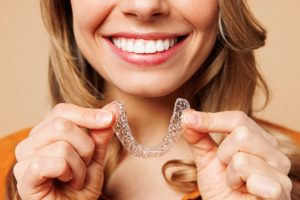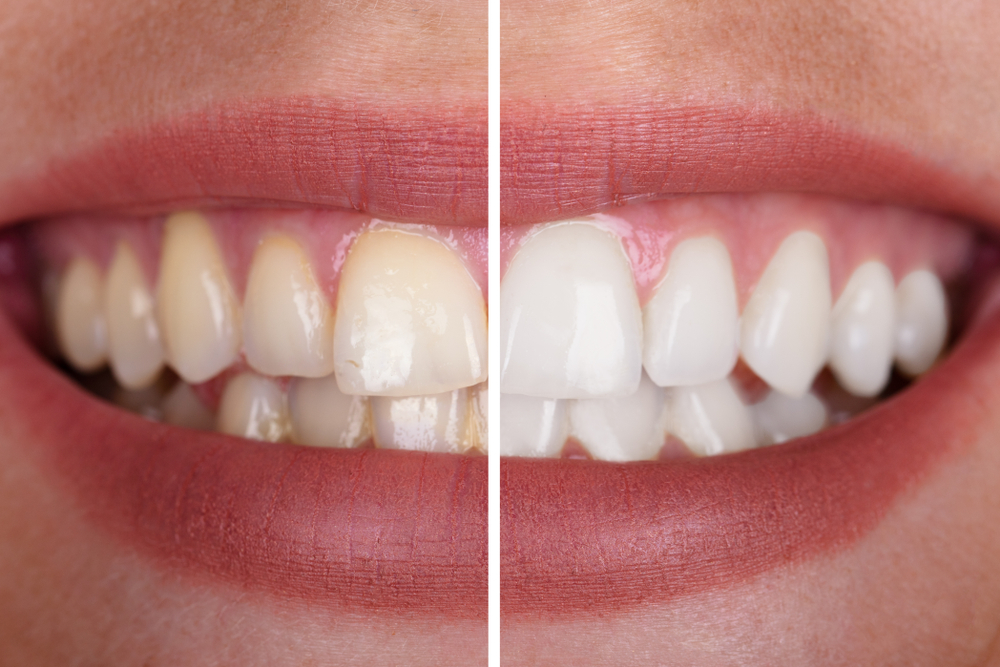Parkcrest Dental Group takes a second look at flossing and the types of floss we use in this blog. Cosmetic dentistry takes on a wide range of meaning in today’s world. When they think of cosmetic dentistry, most people think of teeth whitening kits (which we have!), dental implants (we do those, too!), and toothbrushes and toothpaste guaranteeing beautiful smiles. Many people forget about floss and the importance of cleaning between their teeth, but this simple act, when done each day, keeps your teeth clean and beautiful in ways these other cosmetic dentistry procedures could only dream of.
Related Post: Cosmetic Dentistry: Different Types Of Floss (Part I)
Nylon vs. Teflon Floss
Before we dive into the specifics of which floss works best for you or which floss scrapes away plaque most effectively, let’s explore how manufacturers make floss. Nowadays, manufacturers make floss from Teflon or Nylon. For both Nylon and Teflon, they melt the plastic down into the thin strands. You may have heard Nylon floss referred to as woven. Nylon floss gets this name because many strands make up one string of floss. Manufacturers weave these tiny strands together to add strength.
Teflon floss, also known as monofilament floss, doesn’t need multiple strands for the same strength as Nylon. Once melted down, the Teflon is stretched. This stretching improves strength and makes the Teflon even less breakable. Manufacturers design floss to be unbreakable, though the dentists at the Parkcrest Dental Group have never put floss to the test and don’t advise doing so!
Choosing Between Different Floss Types
So, you finally headed the lectures of your dentist in Springfield, MO, and started flossing. Fantastic. Where do you go now? How do you decide between cool mint, unflavored, waxed, unwaxed, monofilament, or woven floss? To the novice flosser, it can seem strange that so many different types of floss exist. Some of these differences have more serious effects than others, and we are here to help you get started on the path of flossing and great personal cosmetic dentistry.
Related Post: Parkcrest Dental Group: Which Flossing Tool Is Right For You?
Monofilament vs. Woven Floss
These two different types of floss differ in two key ways: price and comfort. Many people claim that monofilament floss, made from Teflon, glides more comfortably between teeth. Monofilament floss has thinner, single strands, making it less likely to fray as well. Teflon floss does, however, have a drawback. It costs significantly more than Nylon floss. Here the decision depends on which you find more important, your wallet or your comfort.
Waxed vs. Unwaxed Floss
Waxed floss slides between your teeth easier than unwaxed floss, but some users claim it leaves wax along their teeth. A few dentists claim that unwaxed floss absorbs plaque and bacteria more efficiently, but there has not been enough clinical research on the topic to come to a definitive answer.
Flavored vs. Unflavored Floss
Does mint give kill bacteria? Does bubblegum flavor leave sugar behind for resilient plaque to feast on? The short answer: no and no. Flavor, like most decisions concerning floss, is a matter of taste (pun intended). We, at the Parkcrest Dental Group, suggest you choose the flavor of floss you enjoy.
Cosmetic Dentistry Flossing Tip: Just Do It
There are only slight differences between each type of floss. Much of it boils down to preference. Once you find a floss that you will use every morning, you have found the perfect floss. Personal cosmetic dentistry is about committing to a regiment. The best floss is a floss that you will use regularly.
Parkcrest Dental Group offers a wide range of cosmetic dentistry procedures. Come talk to us about dental implants, teeth whitening, or any other cosmetic dentistry procedures.




